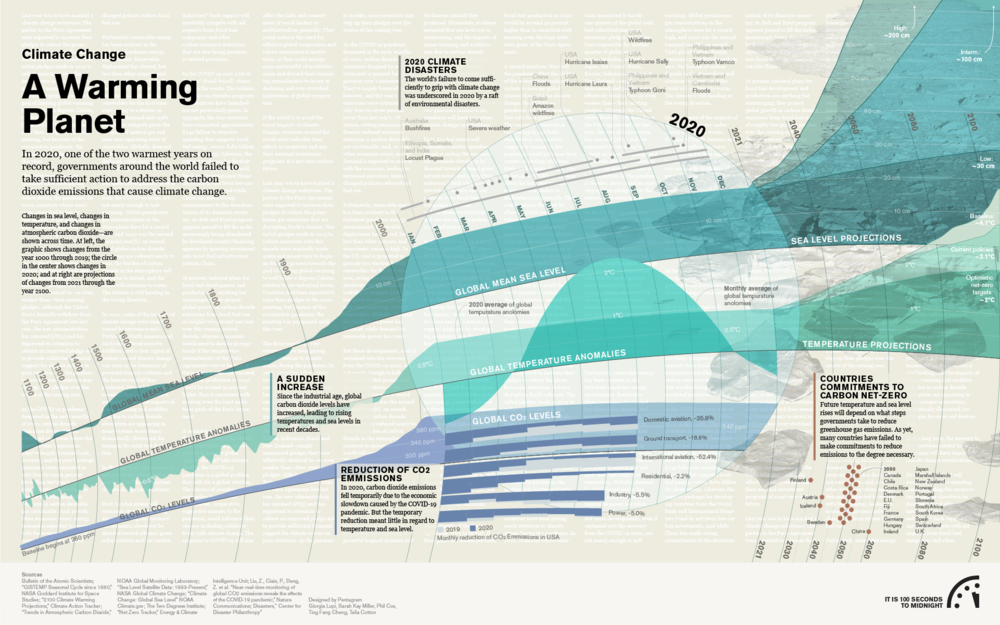The Reading “Design for Information: An Introduction to Histories, Theories, and Best Practices Behind Effective Information” by Isabel Meirelles, was very helpful. The points that were made in the introduction and chapter, were some of the first things I learned in my Information Design Class. Information design is a field of study that takes information and presents it in a digestible way. This is done through Infographics that uses visual elements to present information through Data Visualization. Data Visualization is the way one presents data to an audience; it could be done through illustrations, text, or even charts. While in the class, data visualization was one of the topics that was so interesting: going from numbers and percentages and text to an image that portrays the information as well as the importance and its effects. My favorite examples of data visualization are the work done by Giorgia Lupi. Her work takes all the data and text and portrays it graphically in a beautiful way.
The two computing videos were amazing as well. In “Electronic Computing: Crash Course Computer Science #2,” explains how the new influx of data brought the need for an advancement in computing and automation. It spoke on mechanical computing devices and how it was a disadvantage when making computing higher functional complex problems. It was interesting to also interesting how the term computer bug was created. Also how the indentation of the Vaccum tube decreases the amount of wear for the machine as well as hits the switch 1,000 times per second. Despite that, they burn out often and were initially expensive. Which at the time made them useful to the government. This created a shift from mechanical to electric computing: this was seen with the use of Colossus Mark 1, which used 1,600 Vacuum tubes and was the 1st programmable electronic computer.
In “Boolean Logic & Logic Gates: Crash Course Computer Science #3″, the video mostly focused on Boolean Algebra, in which values of variables are either true or false. In contrast to the applications of addition and subtraction in regular algebra, the applications in Boolean Algebra are: and, or, and not. These are also seen and used in Python where using these Logical Operators helps in creating and defining certain conditions in code. “And ” expects both conditions on either side of the word to be true for the output to be true, “Or” expects either one of the conditions to be true for the output to be true and finally, “Not” flips the original result of the condition. Through the use of these applications, the computer was able to do complex operations and processes.





Leave a Reply